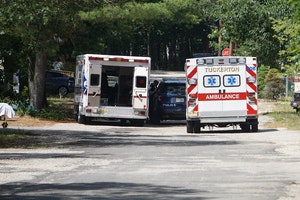Misunderstandings and Myths Regarding Ambulance Accidents
 Here are some examples of misunderstandings and myths around ambulance accidents within the EMS industry.
Here are some examples of misunderstandings and myths around ambulance accidents within the EMS industry.
Accidents Only Occur in Poor Weather
It may make sense that poor visibility and slicker roads cause more accidents. But, data proves that most ambulance accidents happen on clear days with clear visibility. That might be attributable to the additional effort motorists make to modify their driving habits, which includes limiting their speed when the streets are slick.
Are you facing legal problems due to lack of commercial car insurance especially designed for ambulances? Call us at (215) 345-9410.
The Majority of Ambulance Accidents Happen on Dark Streets
Most ambulance accidents happen in broad daylight. A little over 50% of all street deaths occur from 9pm to 12am; however, 92% of car accidents among ambulances happen in either a lighted road or daylight.
The more broadly traveled streets in the United States are lighted, and most EMS calls within a typical community happen during the day. But, the quantity of accidents remains low in conditions of darkened or poor visibility.
The Majority of Ambulance Accidents Occur While Attempting to Pass
Ambulances must hurry through traffic and pass additional cars to arrive to a scene or efficiently leave a scene. However, the truth is that most ambulance accidents occur while taking turns or during broadsides at an intersection.
Even though the ambulance driver of a van with its windows shut can’t usually hear the ambulance approaching until it is right behind the vehicle, the biggest percentage of collisions occur within an intersection, and not while passing a vehicle. Furthermore, the percentage of head-on accidents is actually small, contradicting the myth that entering into an intersection or passing on the left is the worst hazard concerning ambulance driving.
Ambulance Accidents Happen When Backing In
Even a fender-bender counts as a collision. However, realistically, most ambulance collisions happen on the roadway, and not while backing into a parking space. Intersections obviously present an EMS service hazard. The massive quantity of accidents which happen at intersections implies that other motorists do not see or hear an ambulance until it’s too late to come to a stop.
Irrespective of the misunderstanding or myth around ambulance collisions, obtaining, as well as keeping commercial car insurance especially designed for ambulances is key to restricting legal problems and risk.
Are you in need of Fire Companies and Emergency Services Insurance? If the answer is yes, please feel free to get in touch with Steely and Smith Insurance right away at (215) 345-9410.
